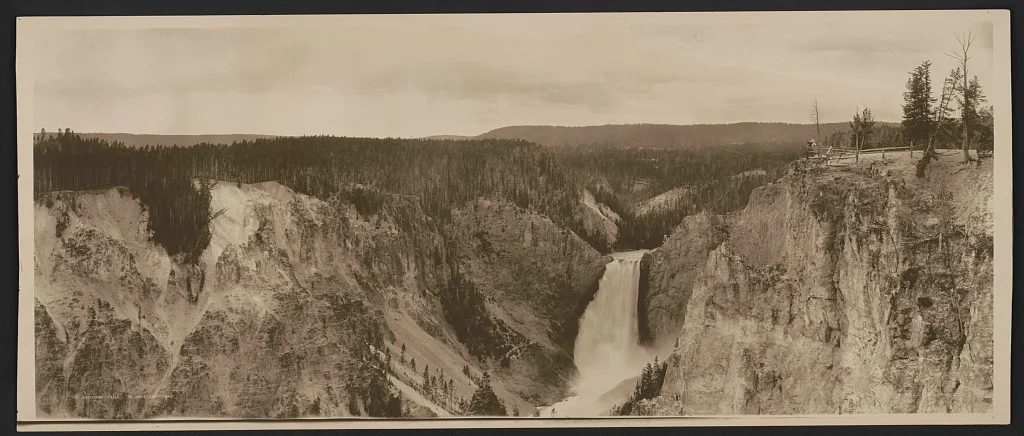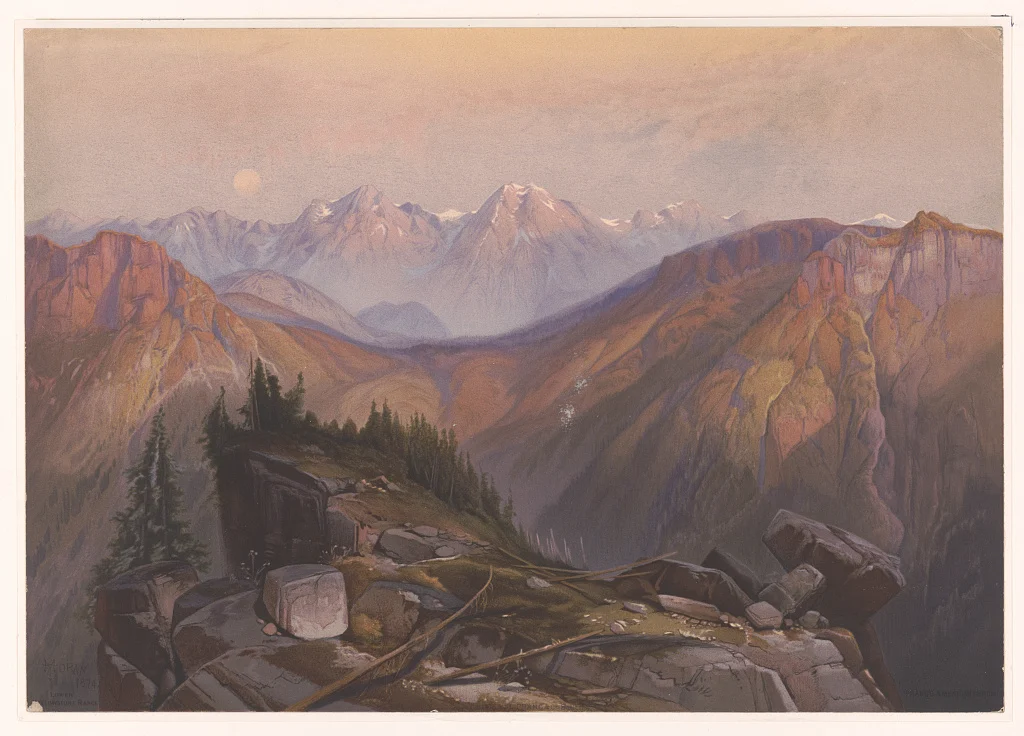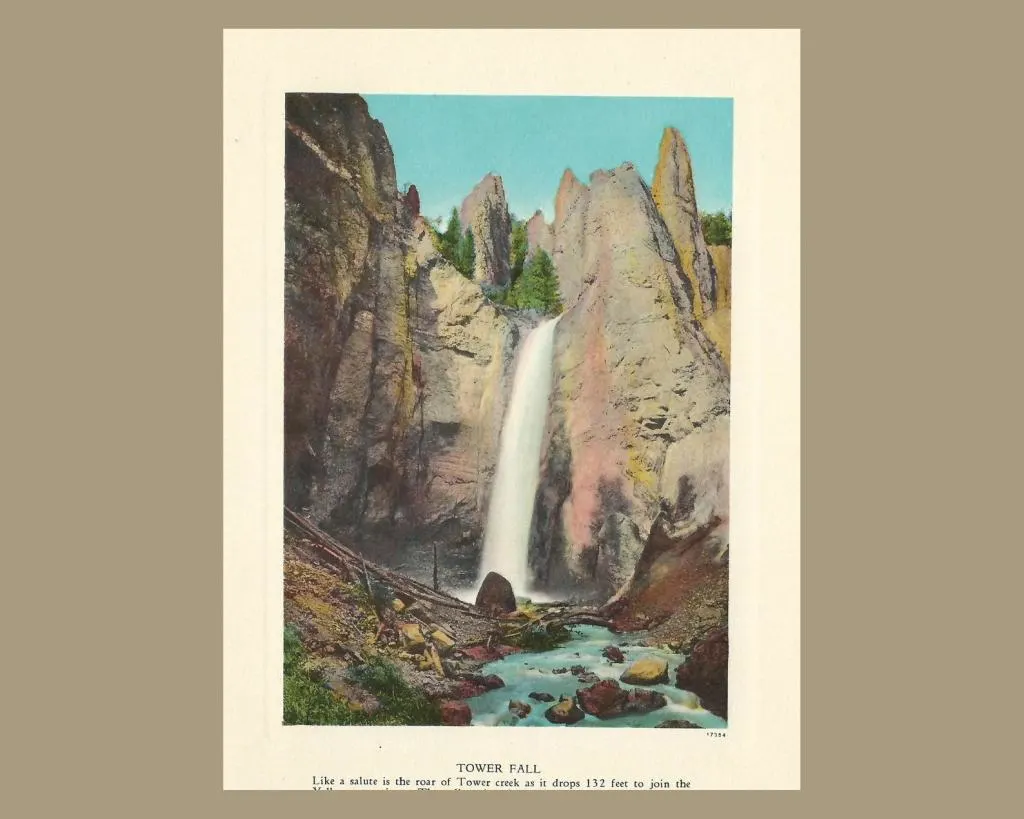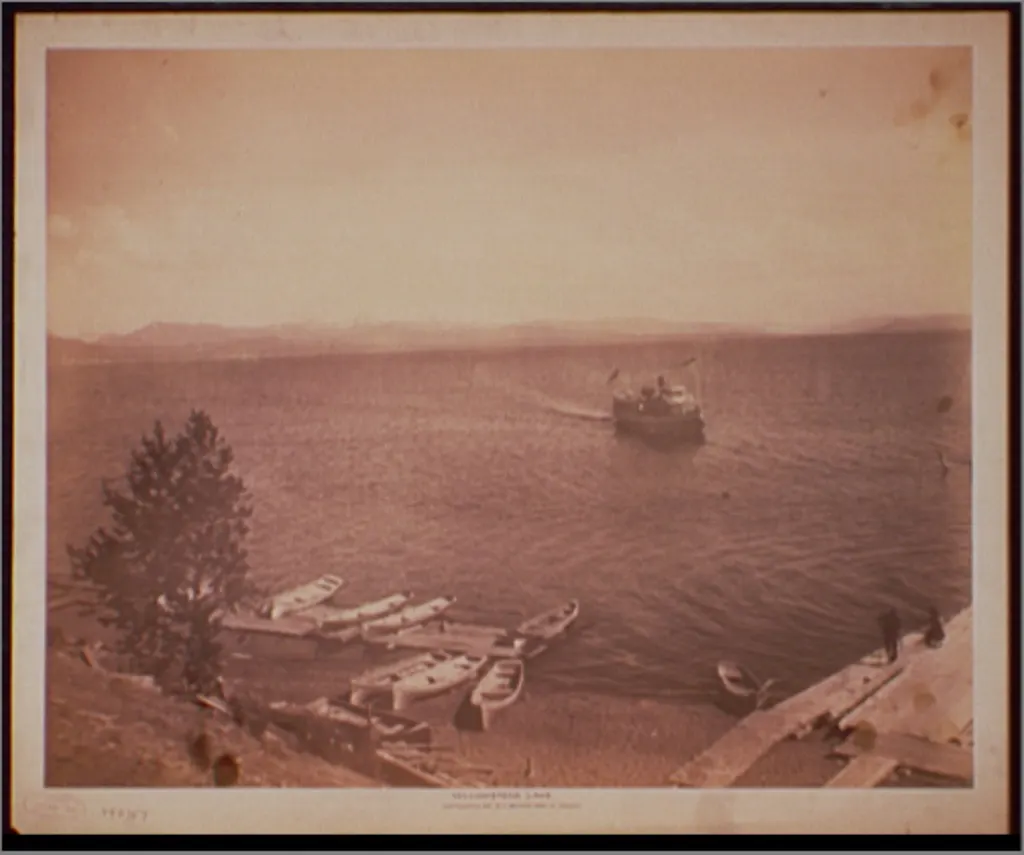The History of Yellowstone National Park
Yellowstone National Park is one of the most visited parks in the world and for good reason. There is no place like it on earth.
Visitors flock to Yellowstone National Park to see the geysers and thermal features, vast wildlife, and hike across the rugged land.
Not only is this park beautiful but it’s also rich in history. So, in order to fully be able to appreciate Yellowstone, we want to share the history behind what makes this park so special.
Let’s learn!

The Early Days of the Yellowstone Area
It’s believed that humans have been living and exploring the Yellowstone area for over 11,000 years.
The land is rich with food and water for animals and humans making it a desirable place to live. Because of the thermal activity, there is warm water year-round allowing life to sustain during the winter. But as explorers pushed west from the New Americas and Western Europe, Yellowstone became a fascinating place.
Not just for its incredible geysers and hot pools but for fur traders.
Fur trading in the Yellowstone area became a major part of the economy and nearly wiped out animals like the bison, river otters, beavers and more. Because capitalism nearly left species extinct people that truly appreciated the land for its natural state sought to protect it.
Not all explorers were there for gain.
Others traveled to learn about the geysers and study why and how they work. It’s because of these explorers that understood the power and beauty of this land that they felt it worth fighting to protect.

The First National Park is Born
In 1871, a petition was formed that imitated the Yosemite Act to protect the land from private development. Through lobbying and presenting just how important the Yellowstone area is, on March 1st, 1872, the then President, Ulysses S. Grant signed the Yellowstone National Park Protection act. Establishing the first National Park in the world.
This then started a domino effect of protecting land not just in the United States but across the world. Without the establishment of Yellowstone National Park, it could very possibly just be another manufacturing plant or housing track.
Today, the National Park branch protects 421 different sites across the U.S. But it wasn’t easy. Even today there is a battle between capitalism and protecting land.

The Early Days of Yellowstone National Park
In the early days of Yellowstone National Park, it was actually protected and managed by the U.S Army. This was to establish the seriousness of protecting this land. This became a theme for early National Parks across the U.S.
Just because the government declared it protected land didn’t mean it was obeyed.
But as the park established an infrastructure of buildings and roads it became more apparent this land was for visitors and not profit.
As the government started protecting more and more land there became a need for a new branch in the government to manage this land. The National Park Service was established in 1916.

Yellowstone Throughout the 1900s
The park has undergone a lot of changes all while maintaining its natural state. One major change was the addition of roads to make it more accessible for visitors.
Along with roads came large resorts and eventually established campgrounds. The borders also have changed with the addition of more land to the park.
During World War II, Yellowstone National Park hit a bit of a decline as rangers and funding shifted to help the war efforts. Roads were left unfinished and buildings falling apart. Then after the war, people started to flock to places like Yellowstone but with low funding it made it hard to keep up with demand.

But in 1966 attitudes changed and it became important to increase National Park funding to make these lands more desirable and safer to visit.
Because more and more people were arriving from all over, it offered more opportunities for people to get hurt. In the 1970’s there used to be a bear feeding show. But because this became dangerous for the people and bears, stricter laws were put into place to help protect the bears.
In 1988, Yellowstone experienced its worst fire season when a couple of small fires started by lightning and merged into the largest fire in the park’s history. Typically, lightning started fires die out very quickly but because of dry weather and high winds the fires spread to over 790,000 acres. This changed the way fire management is done in the parks today.
Another important change to Yellowstone in 1995 wolves were reintroduced into the park. This was a big accomplishment that helped rebalance the ecosystem of the park. Animals like elk and deer had no predators and were damaging the land because of large populations. The wolves’ introduction returned the park to its more natural balance.

Yellowstone Today
Today, Yellowstone National Park is one of the most visited places in the world. The National Park Service has done a great job of developing state of the art facilities while also preserving the beauty of the land.
It’s a place that everyone should visit because it’s like nowhere else on earth.
The Best Free Camping in Yellowstone
Here’s the best part about government-managed land. As American citizens, it’s also your land to enjoy.
The government offices allows camping (for free) and thousands of acres.
We created an article “The 11 Best Free Camping Spots near Yellowstone” to help guide campers like you to the most epic sites.
Discover the Best Free Camping Across the USA
To be honest with you, we hate paying for camping. There are so many free campsites in America (with complete privacy).
You should give it a try!
As a matter of fact, these free campsites are yours. Every time you pay federal taxes, you’re contributing to these lands.
Become a FREE CAMPING INSIDER and join the 100,000 campers that love to score the best site!
We’ll send you the 50 Best Free Campsites in the USA (one per state). Access the list by submitting your email below:
I LOVE Yellowstone Nat’l Park – great article! Thank you!